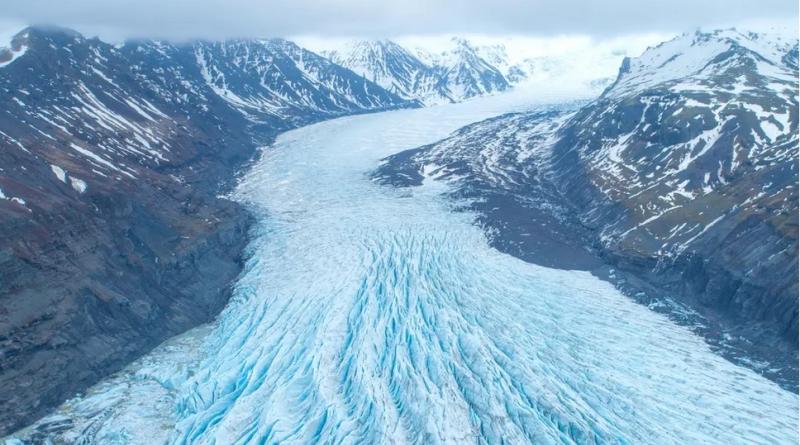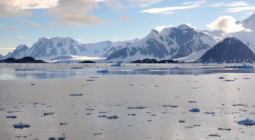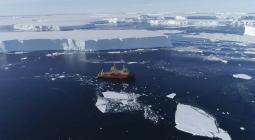Erosion of world’s glaciers causing global oxygen decline, study suggests

Air bubbles in Antarctic ice reveal cause of fall in atmospheric oxygen over last 800,000 years
Over the last 800,000 years, the level of oxygen in the atmosphere has been slowly declining, and new research undertaken in Antarctica suggests glacial erosion could play a previously overlooked role.
Glaciers grind up rock and other matter as they move, carving out landscapes and churning up minerals, and expose organic carbon which has been buried.
Once exposed, the physical and chemical process of weathering – which breaks down rock and minerals – uses up oxygen.
The researchers examined geological records and found around the time oxygen levels began to dip, an important change occurred in the world's glacial cycles.
The team noted that the ice age Earth is in today began about 2.7 million years ago. Since then, dozens of glacial cycles have followed.
In each, the ice caps grow outwards until up to a third of the planet is covered in ice, and then, it eventually retreats toward the poles.
Each of these cycles lasted around 40,000 years until just 1 million years ago. Then, at roughly the same time atmospheric oxygen began to decline, glacial cycles began lasting about 100,000 years – over twice as long.
“We know atmospheric oxygen levels began declining slightly in the late Pleistocene, and it looks like glaciers might have something to do with that,” said Rice University’s Yuzhen Yan, one of the authors of the study.
“Glaciation became more expansive and more intense about the same time, and the simple fact that there is glacial grinding increases weathering.”
Weathering refers to the physical and chemical processes that break down rocks and minerals, and the oxidation of metals is among the most important. The rusting of iron is an example. Reddish iron oxide forms quickly on iron surfaces exposed to atmospheric oxygen, or O2.
“When you expose fresh crystalline surfaces from the sedimentary reservoir to O2, you get weathering that consumes oxygen,” said Dr Yan.
In a previous study he worked on, Dr Yan used air bubbles in ice cores taken from Antarctica to show the proportion of oxygen in Earth’s atmosphere had declined by about 0.2 per cent in the past 800,000 years.
In this study, along with academics from Princeton University, Oregon State University, the University of Maine and the University of California, Dr Yan analyzed bubbles in older ice cores to show the O2 dip began after the length of Earth’s glacial cycles more than doubled around 1 million years ago.
“The reason for the decline is the rate of O2 being produced is lower than the rate of O2 being consumed,” Dr Yan said.
“That's what we call the source and the sink. The source is what produces O2, and the sink is what consumes or drags on O2. In the study, we interpret the decline to be a stronger drag on O2, meaning more is being consumed.”
The glaciation and deglaciation processes have two key impacts influencing oxygen consumption from weathering. The first is through the glaciers themselves, as already mentioned. The second is through sea level rises and falls.
Global sea levels fall when glaciers are growing and advancing, but they rise when glaciers melt and retreat.
When the length of glacial cycles more than doubled, so did the magnitude of swings in sea level. As more land was exposed by receding waters, land previously covered by water would have been exposed to the oxidizing power of atmospheric O2.
“We did some calculations to see how much oxygen that might consume and found it could only account for about a quarter of the observed decrease,” Dr Yan said.
This leaves room for the impact of the glaciers to play its part in the oxygen consumption process.
The extent of ice coverage isn’t precisely known for each glacial cycle, the researchers noted, but said there remains a wider range of uncertainty about the magnitude of chemical weathering from glacial erosion.
But Dr Yan said the evidence the team had collected suggests it could draw enough oxygen to account for the decline.
“On a global scale, it's very hard to pinpoint,” he said.
“But we did some tests about how much additional weathering would be needed to account for the O2 decline, and it's not unreasonable. Theoretically, it could account for the magnitude of what’s been observed.”
The research is published in the journal Science Advances.
A glacier in Iceland. New research suggests weathering caused by glaciers’ movement could be causing a fall in oxygen levels





